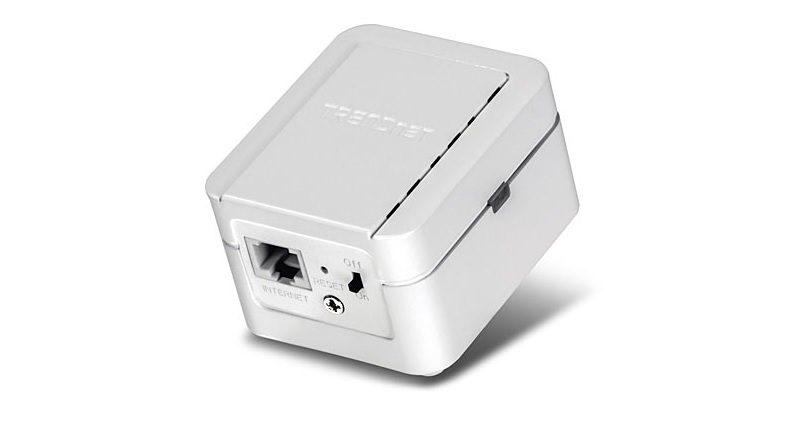Calling all marketers, do you think you send the best emails? Make it official by claiming victory at Everlytic’s You Mailed It Email Marketing…
TRENDnet N300 Easy-N-Range extender review: weak connections made complicated

I have a thing about crappy internet connections, especially since I’m sure my house has leaden walls. Located in my bedroom, the primary WiFi router struggles to beam signal to the lounge, or any other part of the house for that matter, so I often have to make do with another router acting as an extender. But this is often an overly complicated procedure, especially for the uninitiated.
Enter the TRENDnet N300 High Power Easy-N-Range Extender TEW-737HRE, to give it its full, lengthy name. It’s practically a plug-and-go solution to extending your WiFi router’s range, without the need for extra cables, power bricks or UI complications.
The device is slightly larger than the average smartphone charger, weighs about the same as a smartphone, and features a two-prong plug and a number of buttons dotted around its surface. The WPS button doubles up as the status notifier, while the power switch is a toggle located alongside the ethernet-in port.
And that’s practically all you need to do really — plug the ethernet cable in, log into the TRENDnet extender through its default IP address located at the back, and set it up. It should take around five minutes in total.
The keyword here is “should.” Annoyingly, attempts to reset the extender turned this process into an entire weekend affair, because at one point I just couldn’t be bothered to get it working. Eventually, after a few paperclips and gnawed table legs later, the device refreshed and I could log in though its web UI.
From that point on, it’s simple enough. The UI is clear, unobtrusive and uncomplicated. Choose your security settings, name your new extender and configure the login credentials and you’re good to go. It’s child’s play.
Sadly, while the settings were correct, the devices on my network were shocked to see a new device. Starting with my laptop, and many restarts and IP config refreshes later, it worked. And worked well.
I can’t say that the TRENDnet extender was better than an old D-Link router I was using as an extender, but it wasn’t bad. Coverage was more or less the same, while transfer speeds remained constant as well across the home network and connecting to the internet.
But ultimately, my biggest issue with the TRENDnet N300 is the lack of user documentation included in the box. In fact, there’s barely anything in the box other than the extender itself. It would be nice if TRENDnet did take some time out of its busy schedule to print and include a user manual too.
And lastly, the price. Granted, the rand is under pressure right now, but launched in 2013, you’d expect the TRENDnet N300’s price to be reasonable. I don’t call R620 reasonable.
Nevertheless, when you finally get the device working, it’s one of those set-and-forget pieces of equipment. The internet didn’t drop as a result of the extender, but rather my dodgy house-to-exchange connection courtesy of Telkom.
But the important question to ask, is this: why buy a range extender if buying a second router could be cheaper, and positively redundant in the long run?
Verdict: The TRENDnet N300 High Power Easy-N-Range Extender TEW-737HRE isn’t the easiest device to set up, especially since resetting it is like tuning an atomic clock, but when it works, it works well. Still, you have to be fairly savvy to get it going, and that largely cuts off a big portion of the target market.
Score: 5.5/10


